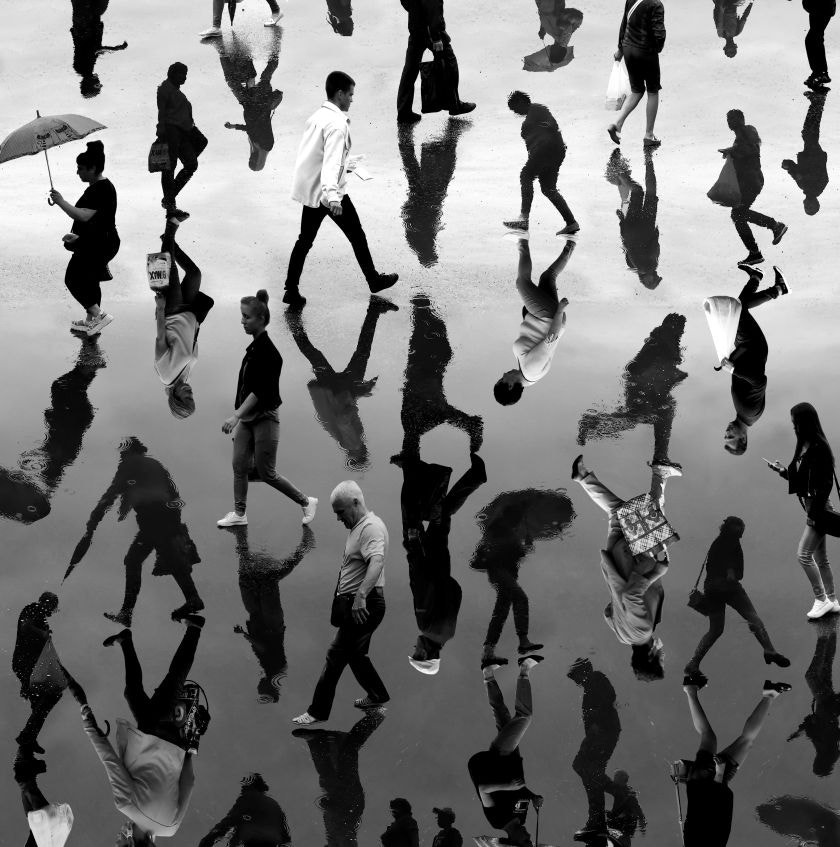How NFTs shield artists – 500px

In 2005, Dave Roth, an newbie photographer, snapped an image of Zoë Roth, his four-year-old daughter, throughout a managed fireplace of their neighborhood. Within the background, a home was in flames; within the foreground was Zoë, a mischievous smile on her face. Dave entered the picture in a contest, and it gained, however it might later go on to viral stardom as a part of the now-famous “Catastrophe Lady” meme.
Within the years since, the picture has been utilized in numerous memes, with the fireplace changed by disasters of all types. The picture has been extensively shared and appropriated, typically with out credit score to the Roths. However in April of 2021, Zoë Roth made headlines when she bought an NFT for the unique copy for greater than $495,000. The Roths will cut up the revenue, and so they’ll additionally obtain 10% of gross sales sooner or later.
Whereas Catastrophe Lady is perhaps an excessive instance, it does provide perception into how NFTs may gain advantage photographers, whether or not they’re newbie shutterbugs capturing meme-able moments or established professionals seeking to diversify their incomes whereas coming into a brand new part of their observe. For years, the query round monetizing digital artworks, from memes to wonderful artwork images, has loomed giant. However this yr, NFTs supplied a possible resolution. Within the course of, they set forth contemporary concepts about who income from artwork gross sales and the way.
In case you want a refresher: NFTs, which stand for “non-fungible tokens,” are distinctive digital property saved on a blockchain, a decentralized public ledger. In artwork, they function like a certificates of authenticity or deed of possession, permitting artists and collectors to create shortage and worth for digital works that may not exist within the bodily world. Let’s check out how NFTs may shield artists in 2022.
Establishing provenance and possession
Photographers have struggled for years with individuals stealing their photos or utilizing them indiscriminately (on social media, for instance), however the blockchain and its capability to supply proof of provenance addresses this subject. Whereas the photographs can definitely be copied, the distinctive digital token can not, and since it’s a part of this decentralized public ledger—the blockchain—it’s straightforward to validate who owns the verified, genuine paintings.
A well-known instance of this concept at work could be discovered within the #FreeHawaiiPhoto mission. In 2017, the photographer Cath Simard shared an image she’d taken in Hawaii on Instagram. It went viral and was stolen many instances over, typically with out credit score. She was by no means compensated for her work, however in 2021, she bought an NFT for the long-lasting image for $300,000.
Then Simard launched the rights to the picture, permitting it to flow into extensively. The thought behind the mission was that because the picture circulated, the worth of the only, authenticated model would rise. Anybody can use the picture, however just one individual owns the unique.
Prices
Minting NFTs often prices cash, with creators paying “fuel charges” to cowl the power wanted to course of transactions on the blockchain. With that being mentioned, NFT marketplaces typically take a smaller proportion of artwork gross sales than conventional galleries—often 10% versus 50%. Plus, many artists are drawn to NFTs due to the chance to chop out the intermediary and join immediately with collectors on-line. Different main attracts for NFT fanatics are sensible contracts and resale royalties, which we’ll discover beneath.
Resale royalties
Artist resale royalties, first utilized in France within the Twenties, permit artists to earn a proportion each time their work is bought. It’s a strong thought as a result of it provides artists the potential to earn extra if their work appreciates in worth, and it’s been within the information in recent times. In 2018, for instance, a California regulation that entitled artists to five% royalty funds upon resale, was restricted solely to artworks created inside a short window of time (1977-78).
In the US, resale royalties should not a part of present copyright regulation. Within the conventional artwork world, for instance, public sale homes can resell artworks for top costs, and in lots of circumstances, the unique artist is not going to be entitled to any of the revenue.
However the blockchain modifications the sport by way of the implementation of sensible contracts. The phrases laid out by the artist, as allowed by {the marketplace} they select, can embrace computerized and enforceable resale royalties. These quantity to percentages slightly than greenback values, so if the work is resold for greater than it was bought, their income shall be proportional to that sale. Because of the blockchain, artists all the time know who owns their work and the way a lot it bought for.
Resales shouldn’t be underestimated, both. An evaluation carried out by Albert-Laszlo Barabasi, a professor of community science at Northeastern College and Central European College, and the information scientist Milan Janosov, not too long ago published in The New York Times, discovered that resales represented 36% of artwork bought on the influential platform SuperRare.
One inspiring side of the NFT neighborhood proper now’s that artists will typically develop into collectors; that’s, as they promote their work, many will reinvest it into different artists. We’ve additionally seen artists incorporate non-profits into their sensible contracts. Marketplaces like DoinGud, as an illustration, take this concept to a different stage by permitting artists to resolve what charity their work will profit and what number they’ll donate. On DoinGud, which runs on the Polygon blockchain, the minimal donation for gross sales on the first market is 5%, and the default for the secondary market is 2.5%.
Copyright
The world of NFTs is perhaps new and thrilling, however copyright legal guidelines nonetheless apply. For photographers, which means you personal the copyright to your work except you explicitly signal it away. In that sense, it’s much like promoting a bodily murals like a print; the collector owns the token, however that doesn’t essentially imply that they personal the copyright. The artist units the principles, and it’s as much as them to resolve what rights they preserve and what rights they offer away.
Regardless of how or the place you promote your NFTs, keep in mind to learn your sensible contract rigorously, so precisely what rights you’re granting the client. In virtually all circumstances, we advocate sustaining the copyright to your work; that means, you need to use your photographs as you want and doubtlessly license them down the highway to different patrons, equivalent to industrial shoppers.
Past the present NFT craze, the hope is that blockchain expertise will empower artists to have extra management over how their work is purchased, bought, and used. One other chance is that artists, together with these historically not noted by the artwork institution (digital artists, for instance), may use it to monetize their private work, permitting them to diversify their incomes and earn cash from labor that has traditionally gone unrecognized past “Likes” and feedback.
Join the Vault waitlist to get early entry and be the primary to search out out how one can create, purchase, promote, and earn.




